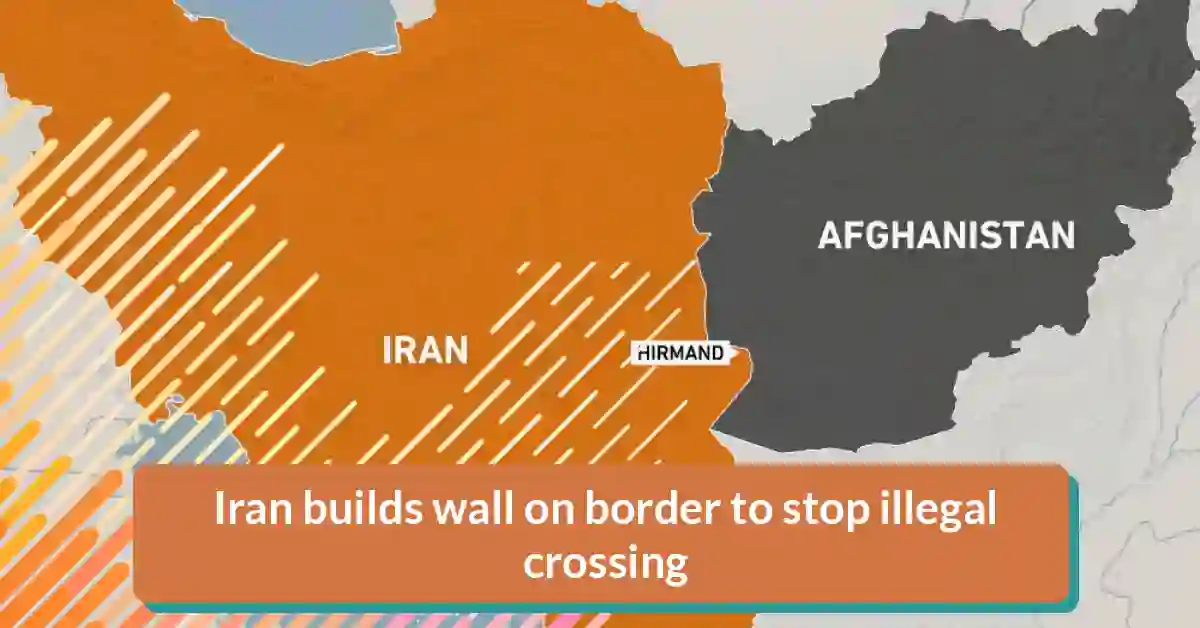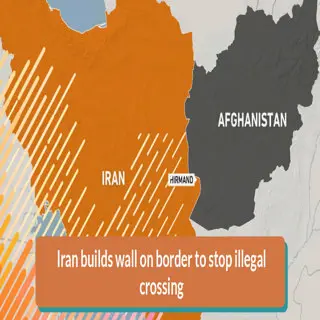Iran has built over 10 kilometers of wall along its eastern border with Afghanistan to control migration and enhance security. With millions of Afghan refugees in Iran, the influx increased after the Taliban's 2021 takeover. Authorities plan to expel illegal immigrants and further reinforce the border with additional barriers.
Iran’s military has constructed a wall along more than 10 kilometers of its eastern border with Afghanistan, the primary entry point for immigrants, according to local media reports on Monday.

"More than 10 kilometers of walls have been completed on the border, and another 50 kilometers are set to be walled off," stated General Nozar Nemati, deputy commander of army ground forces, as quoted by ISNA news agency.
Iran shares a 900-kilometer border with Afghanistan and hosts one of the world’s largest refugee populations, mostly Afghans who fled conflict over the past 40 years.
The influx of Afghan immigrants has surged since the Taliban's takeover in August 2021 following the U.S. withdrawal. While no official figure has been provided, Iranian MP Abolfazl Torabi estimates there are "between six and seven million" Afghan immigrants in the country.
Recently, Iranian authorities have increased efforts to expel "illegal" refugees, with frequent announcements of deportations through the eastern border. General Nemati explained that the wall is intended to "control the country’s entries and exits" and enhance border security.
In September, Interior Minister Eskandar Momeni announced plans to add barbed wire and water-filled ditches alongside the wall to strengthen the border.
On September 13, Ebrahim Rezaei, spokesman for the parliamentary National Security Committee, said police plan to "expel more than two million illegal citizens in the near future."
According to the official IRNA news agency, over 90 percent of foreign nationals in Iran are Afghan, with many entering the country without identification papers. President Masoud Pezeshkian has stated that his government aims to "repatriate illegal nationals in a respectful manner."
In the year starting in March 2023, Iran hosted over 2.7 million documented Afghan refugees, accounting for 97 percent of legal migrants in the country, according to the Statistics Centre.
People cross the border illegally from Afghanistan to Iran for several reasons, primarily driven by poverty, unemployment, and instability in Afghanistan. Many Afghans seek better economic opportunities in Iran, which offers relatively higher wages and more job prospects, especially in sectors like construction and agriculture. Additionally, years of conflict, insecurity, and political turmoil push Afghans to seek safety and stability elsewhere. Some also cross for religious or cultural reasons, as ethnic groups like the Hazara, who are Shia Muslims, may feel a stronger connection to Iran. The porous, difficult-to-patrol border and the lack of proper legal pathways further encourage illegal crossings.
Illegal border crossing around the world
| Region/Country | Estimated Illegal Migrants | Year | Key Details |
| United States | ~11 million | 2023 | Largest population of illegal migrants; primarily from Mexico and Central America. |
| European Union | ~3.9 million | 2022 | Major countries of origin include Syria, Afghanistan, and Iraq. |
| Saudi Arabia | ~1.7 million | 2021 | High number of undocumented workers from South Asia and Africa. |
| United Kingdom | ~800,000 | 2022 | Migrants mainly from Africa, South Asia, and the Middle East. |
| India | ~3 million | 2020 | Majority from Bangladesh and Nepal. |
| South Africa | ~1.5 million | 2021 | Many migrants come from Zimbabwe, Mozambique, and other African nations. |
| Malaysia | ~2 million |
Related News
-

New China Visa Policy: Greece, Slovenia, and Norway Nationals Can Travel Visa-Free
-

Khunjerab Pass Reopens, Restoring Cross-Border Trade and Travel
-

PIA Soars to Profit After Two Decades of Losses: A New Era for Pakistan’s Flag Carrier
-

Saudi Arabia Introduces Personal Visit Visa for Umrah with Muslim Friends


